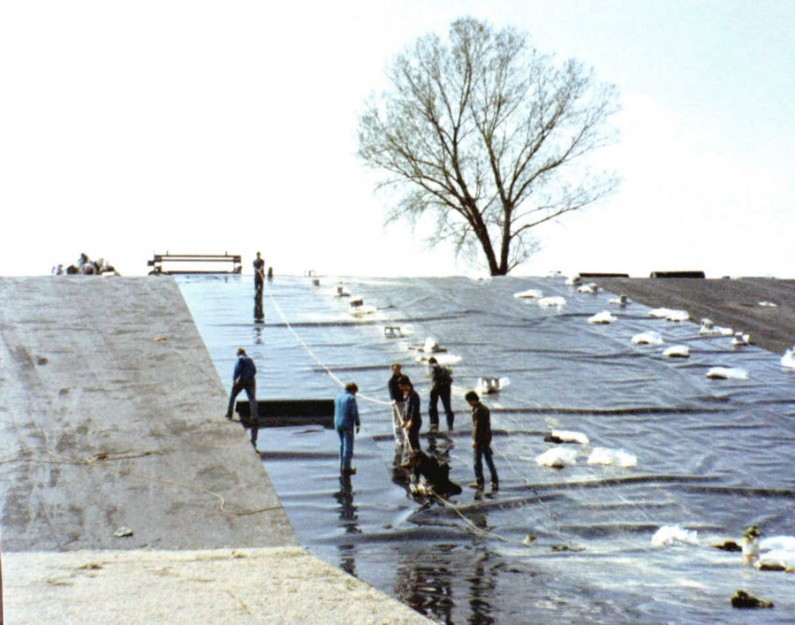
On 2 June 1977, the general council of Lombardy approved the five action plans for the reclamation of the polluted territory.
More
The implementation was entrusted to the Seveso Special Office. After discarding the idea of building an incinerator for polluted materials, between 1981 and 1984 two leak-proof basins were built as deposits for polluted material. This hill situated in the Oak Wood is the so-called basin of Seveso, one of two created for the safe deposit of polluted material. The other basin is situated to the north, in Meda, in the unfenced part of the park.
The capacity of the Seveso basin is 200,000 cu. m while the one in Meda is 80,000 cu. m. For the safe deposit of polluted material, a succession of four-barriers system was adopted, separating the pollutants from the external environment. The basins are equipped with a series of monitoring instruments to verify possible leaks, and ensure the safety of the place. Most of the polluted material is made up of surface soil removed from the entire territory of “Zone A” up to a depth of 46 cm. The Seveso basin contains the remains of houses, personal belongings, dead animals or those later slaughtered following the incident (more than 80,000 animals died or were slaughtered) and also part of the equipment used in the reclamation works.
The soil which today constitutes the surface layer of the wood was taken from other zones of Lombardy. Not only the soil but also the basins preserve the memories of those who were forced to leave from 26 July 1976 onwards.
The capacity of the Seveso basin is 200,000 cu. m while the one in Meda is 80,000 cu. m. For the safe deposit of polluted material, a succession of four-barriers system was adopted, separating the pollutants from the external environment. The basins are equipped with a series of monitoring instruments to verify possible leaks, and ensure the safety of the place. Most of the polluted material is made up of surface soil removed from the entire territory of “Zone A” up to a depth of 46 cm. The Seveso basin contains the remains of houses, personal belongings, dead animals or those later slaughtered following the incident (more than 80,000 animals died or were slaughtered) and also part of the equipment used in the reclamation works.
The soil which today constitutes the surface layer of the wood was taken from other zones of Lombardy. Not only the soil but also the basins preserve the memories of those who were forced to leave from 26 July 1976 onwards.
